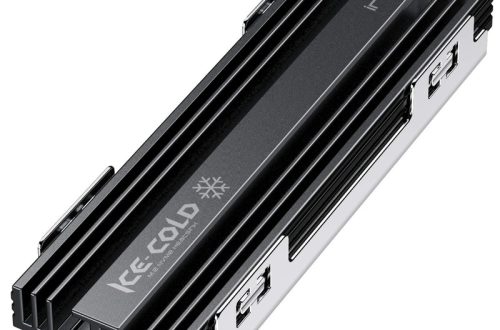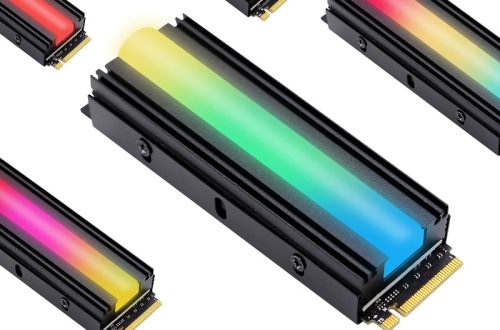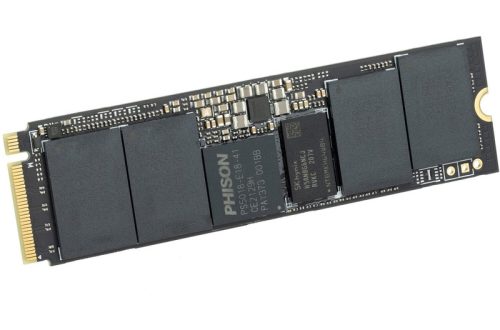Introduction to Central Processing Units (CPUs)
In the world of computing, the Central Processing Unit (CPU) is vital. It’s the main chip in any computing device, akin to the brain in a human body. It does the heavy lifting of processing instructions from different programs and applications running on a device. Without a functioning CPU, a computer, phone, or any smart device would be inoperative.
CPU Fundamentals and Role in Computing
The CPU is the engine that powers every action on your computer or device. It interprets code via basic arithmetic, controls data flows, and enables all functions from simple commands to complex program operations. It works tirelessly, fetching, decoding, and executing instructions rapidly. This ability to process wide-ranging tasks makes the CPU essential for device operation.
The Evolution of CPU Technology
Over time, CPU technology has significantly advanced. From early models with limited capabilities to today’s intricate processors, CPUs have undergone massive changes. They’ve become faster, smaller, and more efficient. This progress has opened up new possibilities in computing, from playing immersive games to deploying complex machine learning algorithms. The march of CPU evolution is relentless, paving the way for ever more powerful computing experiences.

Core Components of a CPU
Every CPU has three critical components that work together to process data.
Control Unit: The Directive Center
The Control Unit, or CU, acts as a traffic director for data in the CPU. It tells other parts what to do.
Arithmetic Logic Unit: The Math and Logic Powerhouse
The Arithmetic Logic Unit, or ALU, does all the math and logical thinking for the CPU.
Memory Unit: The Repository for Data and Instructions
The Memory Unit stores data and instructions the CPU needs for processing tasks quickly and efficiently.
The CPU Instruction Cycle
The CPU instruction cycle is crucial for the CPU to complete tasks. It involves three primary stages: fetching, decoding, and executing instructions. This sequence allows the CPU to process data and carry out commands accurately and efficiently.
The Fetch-Decode-Execute Process
- Fetch: The CPU takes an instruction from the computer’s memory.
- Decode: The CPU understands and prepares to execute the instruction.
- Execute: The CPU performs the action required by the instruction.
These stages work in a continuous cycle, enabling the CPU to process millions of instructions per second. This process is the core of what the CPU does and allows the system to function.
Role of the CPU in Instruction Sets
Instruction sets are like the CPU’s language. They are predefined codes that the CPU can recognize and act upon. Each CPU is designed to understand a specific set of instructions. When selecting or programming a CPU, it’s important to ensure that the instructions match the CPU’s capabilities. The CPU relies on these sets to perform tasks, from simple calculations to complex operations in applications.

CPU Cores and Multithreading
As we delve deeper into the anatomy of the CPU, cores and multithreading emerge as crucial elements.
Understanding CPU Cores
Imagine a CPU core as an individual worker; with more workers, a computer can tackle more tasks simultaneously. Think of a ‘dual-core’ CPU like having two workers, while a ‘quad-core’ has four. Each core can process tasks independently or work on separate parts of a single, complex task.
Including multiple cores in CPUs has drastically improved their ability to handle various applications at once, making multitasking smoother and more efficient. This multi-core setup is why modern computers can run many programs without a hitch.
Simultaneous Multithreading for Enhanced Performance
Simultaneous Multithreading, often known as SMT, takes CPU efficiency to the next level. It’s like giving each worker in our earlier example a helper. This way, even if one worker is busy, their helper can take on additional tasks within the same core.
What this means for performance is striking—SMT can virtually double the number of tasks a CPU can work on at once. So, a quad-core CPU with SMT acts like it has eight cores, juggling instructions more effectively and increasing overall speed.
By employing multithreading, CPUs are not just doing more at once; they’re doing it faster, seamlessly transitioning between tasks and maximizing the use of every clock cycle. This ability ensures sleek performance, especially in scenarios demanding heavy computing, like gaming or video editing.
Clock Speed and Processor Performance
Understanding how a CPU executes tasks helps grasp clock speed’s importance.
The Significance of Clock Speed in CPUs
Clock speed indicates a CPU’s pace for executing instructions. It’s measured in hertz (Hz). Higher hertz mean more instructions processed per second. This speed can influence a computer’s responsiveness and efficiency.
A CPU’s clock speed shows how fast it can perform operations. It’s like the heartbeat of the processor, with faster beats allowing quicker data processing. But speed isn’t everything. The CPU’s architecture also plays a crucial role.
Clock speed can affect program performance. It’s vital for tasks needing quick data handling. However, it’s just one factor in overall CPU capability.
How Clock Speed Affects Task Execution
Speed impacts how quickly a CPU finishes tasks. A higher clock speed may lead to swifter program execution and a more responsive computer.
In simple tasks, like typing a document, speed differences may not be noticeable. But for demanding applications, like gaming or video editing, a higher clock speed can significantly improve performance.
Clock speed works alongside CPU cores to manage tasks. More cores and a higher clock speed mean better multitasking and faster performance.
Threads and clock speed together determine efficiency. More threads and a higher speed mean the CPU can handle more tasks simultaneously.
In conclusion, clock speed plays a key role in a CPU’s performance. It determines the rate at which instructions are processed. A higher clock speed may improve task execution speeds, especially for demanding applications. Yet, it’s important to remember that other CPU features, like cores and threads, also affect performance.

Embedded Systems and the CPU
Embedded systems, like smart gadgets and IoT devices, rely heavily on CPUs. These CPUs vary from those in typical computers and have unique demands.
CPUs in Today’s Embedded Technologies
Today’s embedded systems integrate CPUs to perform specialized tasks efficiently. From smartwatches to home automation, CPUs are tailored to the device’s needs. They handle complex calculations behind the scenes, directing the system’s operations.
Modern CPUs in embedded tech are powerful yet energy-efficient. They manage tasks alongside other system components, often without fans for cooling. This requirement for lower power consumption and heat output shapes CPU choice for embedded applications.
Embedded CPUs also find roles in industrial control systems and medical devices. They ensure precision and reliability where exact operation is crucial.
Testing and Developing with Embedded CPUs
Debugging and development are key with embedded CPUs. Engineers often use host adapters and protocol analyzers for this purpose.
Emulating master or slave devices helps to validate an embedded CPU’s communications. Testing with specific tools allows developers to refine CPU operations, ensuring reliable interactions within the system.
For optimal testing, consistent environments and repeated test executions are vital. Tools like benchmarking software provide performance metrics, helping gauge a CPU’s efficiency in the intended setup.
In essence, the right CPU in an embedded system is critical for targeted, efficient, and reliable performance. Development and testing tools assist engineers in fine-tuning these systems to meet exact requirements. With the future in mind, selecting the appropriate CPU and rigorous benchmarking are steps that pave the way for innovation and precision in technology.




